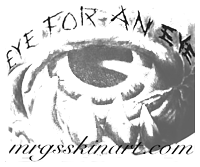Using only black and shades of gray, this tattoo style is versatile and bold. Black &gray tattoos are what I learned first and where my passion lies. I have been doing black and gray tattoos in Las Vegas and Southern California for 30 years.
Typically, black-and-gray tattoo work is produced by diluting the black ink with distilled water in varying proportions to create a “wash” that results in lighter shades.Gray shades can also be produced by mixing small amounts of black ink with white ink, which produces a thicker but brighter result and requires a slower application. Shading is typically an important component for these types of tattoos as they will fade over a period of years without strong black tones, which provide contrast and allows the tattoo to stand out. Subtle kinds of shading in black-and-gray are considered to require a high level of skill and illustrates professionalism in the industry.
Black-and-gray techniques are often employed for a variety of tattoos. Japanese irezumi, such as the rising koi, are traditionally done using black-and-gray, although colored irezumi sometimes use black-and-gray backgrounds in a manner similar to sumi-e brushwork. Classic Chicano tattoos — which include a broad range of imagery such as icons in Catholicism or the Mexican flag and partially originated from prison life — are also normally done in black-and-gray. Photo-realistic portraits are also commonly done in black-and-gray, and typically resist deterioration better than color portraits.
In some color tattoos, artists can use black-and-gray initially to provide a foundation for the subsequent shading using colors. The colored ink can be added directly above the black-and-gray portions of the tattoo.
MAKE AN APPOINTMENT
